Intelligent hearing protection technology is now available that provides personalised data about an individual’s noise exposure, making it easier to both spot workers at greatest risk of hearing damage and identify ways of reducing noise exposure.
Features
Why personalised noise monitoring is critical for preventing noise-induced hearing loss
If you’ve ever argued with someone over who gets to control the volume on your TV, you already understand something that’s fundamental to effective noise monitoring: people can be exposed to the exact same source and level of noise, and still experience it – and be impacted by it – completely differently.
And whether someone finds a noise to be loud, intrusive or overwhelming isn’t just down to simple preference: the way that a person experiences noise is driven by factors like age, anatomy, genetics and gender. Even language plays a role in how we experience noise.
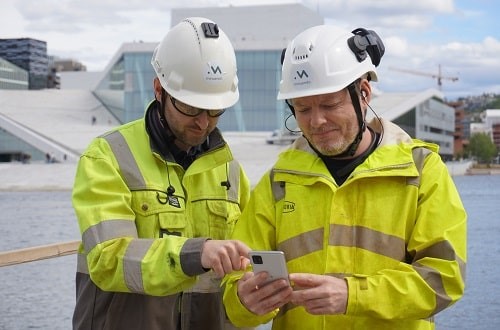 Photograph: Minuendo
Photograph: Minuendo
Of course, exposure to noise – whether prolonged or a one-off occurrence – and hearing loss – whether it’s mild, moderate or severe – also contribute to the ways in which noise impacts us when we’re exposed to it.
In sum: noise isn’t a one-size-fits-all sensory experience. And that’s exactly why it’s so important to monitor and manage exposure to occupational noise using a personalised approach.
Noise-induced hearing loss is preventable, so why are cases on the rise?
In the same way that age, anatomy or gender can influence how a person is impacted by the noises around them, there are several factors that can impact the amount of noise to which a worker might be exposed in an occupational setting, specifically. These include operator competency, worker habits or behaviours, tool age or condition, and – of course – the type of personal protective equipment (PPE) being used, and whether it’s being used correctly.
These variations in behaviour and environmental factors, among others, are the primary reason that traditional methods for preventing noise-induced hearing loss (NIHL), such as third-party risk assessments and standard-issue PPE, simply haven’t been effective. In fact, in the UK alone, HSE estimates that over two million workers are exposed to harmful levels of noise at work. Further, employers have seen a notable spike in claims for industrial deafness (NIHL) over the last few years, bringing the ongoing challenge of effective occupational noise monitoring into even sharper focus (see HSE chart).
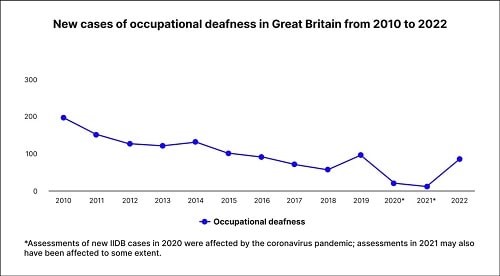 Source: Health and Safety Executive (HSE)
Source: Health and Safety Executive (HSE)
At first blush, it’s tempting to label NIHL as ‘stubborn’ or even ‘unavoidable’. After all, in industries like construction, heavy engineering, or manufacturing, noise is part and parcel to the work being done. But the truth is that NIHL is anything but unavoidable. In fact, NIHL has been called “the most common preventable occupational health condition in the world”. But if NIHL is preventable – the most common preventable health condition in the entire world – why are cases on the rise? And why do two million workers in the UK still suffer?
The answer, as it turns out, is straightforward: employers are showing up to the fight against NIHL with the wrong weapons in their risk management arsenal.
Traditional approaches to occupational noise monitoring lack the depth to make a difference
Historically, companies have relied on periodic risk assessments to manage their workers’ exposure to noise and maintain their compliance with relevant health and safety regulations. These risk assessments are conducted by third-party consultants (‘noise assessors’) who visit worksites to pull together what is essentially a snapshot of an employer’s noise environment.
Following an assessment, these professionals will determine the average levels of noise in a given environment and offer an estimate of the personal daily noise exposure of employees. Noise assessors also provide recommendations and information regarding controls, hearing protection programmes, health surveillance and PPE.
And while such risk assessments are useful for capturing a wide breadth of information that employers can use to try and combat NIHL, they don’t provide anywhere near the level of depth and insight necessary to truly, meaningfully tackle this condition. This is particularly true in dynamic workplaces, where conditions are always changing: How can averages and estimates possibly provide an adequate foundation for tackling exposure to risk in environments that are in a near constant state of flux?
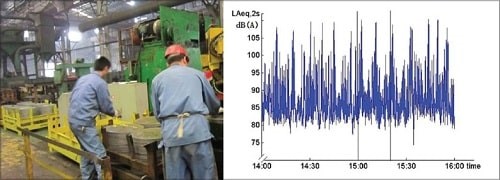 Credit: National Library of Medicine/Chinese Medical Journal
Credit: National Library of Medicine/Chinese Medical Journal
The image above shows a working environment (left) and the personal exposure of one worker (right). It’s clear from the chart on the right that the personal exposure of the worker changed often and dramatically throughout even a small portion of a typical working day. The study notes that “the workers’ personal noise exposure levels changed irregularly over time” in this workplace, where “background noise level was unstable”, there were “unsteady continuous and impulse noises”, and “machines were switched on irregularly”. In such a dynamic and unpredictable (but not unusual) working environment, the study found that the prevalence of NIHL among workers was a staggering 65 per cent even when earplugs were worn.
Ultimately, understanding the average levels of noise in a workplace, and gaining an estimate of the daily noise exposure of employees, is good. But when you add personalised data about individual employees’ actual exposure to noise in an inherently unpredictable and dynamic working environment, that’s when you really begin to unlock insight that can directly inform better ways of working and support more effective noise control measures that can immediately improve health and safety outcomes for workers, and compliance efforts for employers.
You should expect more from your investment in risk management
The risk management landscape is changing.
In a sense, the very definition of risk management, and what it means to do risk management well, is evolving, and merging with other aspects of organisational operations.
Driven by rapid digitalisation across every sector and industry, creating successful risk management initiatives today means much more than simply ticking the ‘regulatory compliance’ box: it means better people management and resource allocation, more efficient processes and more streamlined operations, and increased visibility into every facet of the workplace risk environment. If your team isn’t getting all of this from its investment into risk management and health surveillance, you’re continuing to tick just one box, when you could be ticking more.
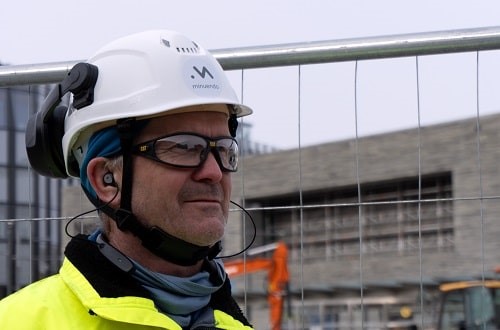 Photograph: Minuendo
Photograph: Minuendo
When it comes to monitoring and managing your noise environment at work, and preventing NIHL among your employees, only modern solutions offer teams the insight they need to mitigate risk while also unlocking additional opportunities for efficiency, productivity and all-round better ways of working.
Today, there is purpose-built technology that provides workers and teams with ongoing, real-time, personalised data that they can use to make better decisions every day. No estimates. No averages. Just uncomplicated, fast access to accurate, reliable data about workers’ exposure to noise.
And the information provided by such solutions goes beyond in-the-moment course corrections. Sophisticated (but easy-to-use) technology transforms workers, safety managers or duty holders into analysts, enabling them to access and evaluate data at-a-glance. By making it easy for anyone, at any level, to identify trends, patterns or hotspots, modern solutions are making it possible for organisations to meaningfully mobilise their workforces in the fight against workplace risk and conditions like NIHL.
Everything you need for better noise monitoring is at your fingertips
There is a wealth of data generated by workers each and every day, and within it there are keys to unlocking more productivity, increased efficiency and – most critically – better health and safety outcomes for employees. But historically, this invaluable information has been almost entirely unavailable to organisations as they plan their risk management initiatives and make further investments into their health surveillance programmes, particularly with regard to noise monitoring.
Today, that information is finally available, and the insight that it generates is – in a word – priceless.
With modern technological solutions, teams around the world are learning more about their workers’ exposure to occupational noise than they ever have before, and they’re doing it all without spending extra time, energy, or personnel to completely transform the way they approach this area of risk management.
Personalised noise monitoring is the only way to ensure that individual employees operating in a dynamic environment are protected from exposure to potentially dangerous levels of noise. And it’s the only way to ensure that your noise monitoring efforts are more than one-dimensional, box-ticking exercises.
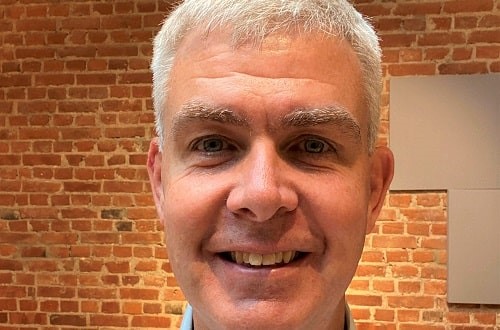 Neal Muggleton, chief operating officer, Minuendo: "Personalised noise monitoring is the only way to ensure that individual employees operating in a dynamic environment are protected from exposure to potentially dangerous levels of noise." Photograph: Minuendo
Neal Muggleton, chief operating officer, Minuendo: "Personalised noise monitoring is the only way to ensure that individual employees operating in a dynamic environment are protected from exposure to potentially dangerous levels of noise." Photograph: Minuendo
Adopt personalised noise monitoring to unlock data that can make a difference
In a dynamic working environment, there’s no way to create an effective health surveillance programme with regards to noise monitoring that’s based entirely on averages and estimates, or on information that’s collected during a brief window in time.
Your workers’ exposure to noise (and the impact that noise can have on their hearing) is far from static: the amount and frequency of the noise they’re exposed to is constantly in flux, and there are a number of factors that can influence whether and to what extent an individual worker experiences NIHL as a result of exposure to noise at work.
Fortunately, in today’s modern marketplace, there are lightweight, purpose-built solutions designed to keep up with constantly changing workplace conditions, and ensure that workers stay protected from risks that affect them in specific and uniquely individual ways.
New ‘intelligent’ personal hearing protection equipment is available with noise data collection, storage and analysis capabilities. The technology creates accurate records of each worker’s noise exposure, sends an alarm to the worker when a noise risk is detected (warning them to take action), and provides employers with valuable usage data, such as when and how well the personal hearing protection has been worn by employees. Historical noise exposure data can be stored and analysed, allowing employers to pinpoint those individuals most at risk of NIHL.
You don’t hear what I hear, and your workers don’t experience noise (or its potentially harmful effects) in a uniform way. Everyone is different, and risk impacts everyone in a distinctly personal manner.
So, if your current approach to occupational noise monitoring and NIHL prevention is still one-size-fits-all, it’s time to drill down, level-up, and step forward into the modern era of risk management.
Neal Muggleton is chief operating officer at Minuendo.
For more information see: minuendo.com


FEATURES

India’s path to net zero: a work in progress
By Orchie Bandyopadhyay on 08 April 2025
India is implementing a variety of clean energy measures to hit its target of net zero greenhouse gas emissions by 2070, including plans to rapidly scale up the generation of nuclear power. However, climate experts say significant finance will be required from developed countries to phase out coal power, accelerate renewables deployment and expand the national electricity grid.

Too hot to handle: early arrival of heatwaves in India sparks calls for action to protect workers and the public
By Orchie Bandyopadhyay on 08 April 2025
Temperatures in India in February 2025 were the hottest since records began over a century ago, prompting warnings the country needs to urgently step up efforts to protect both workers and the general population from the health risks posed by extreme heat and humidity.

